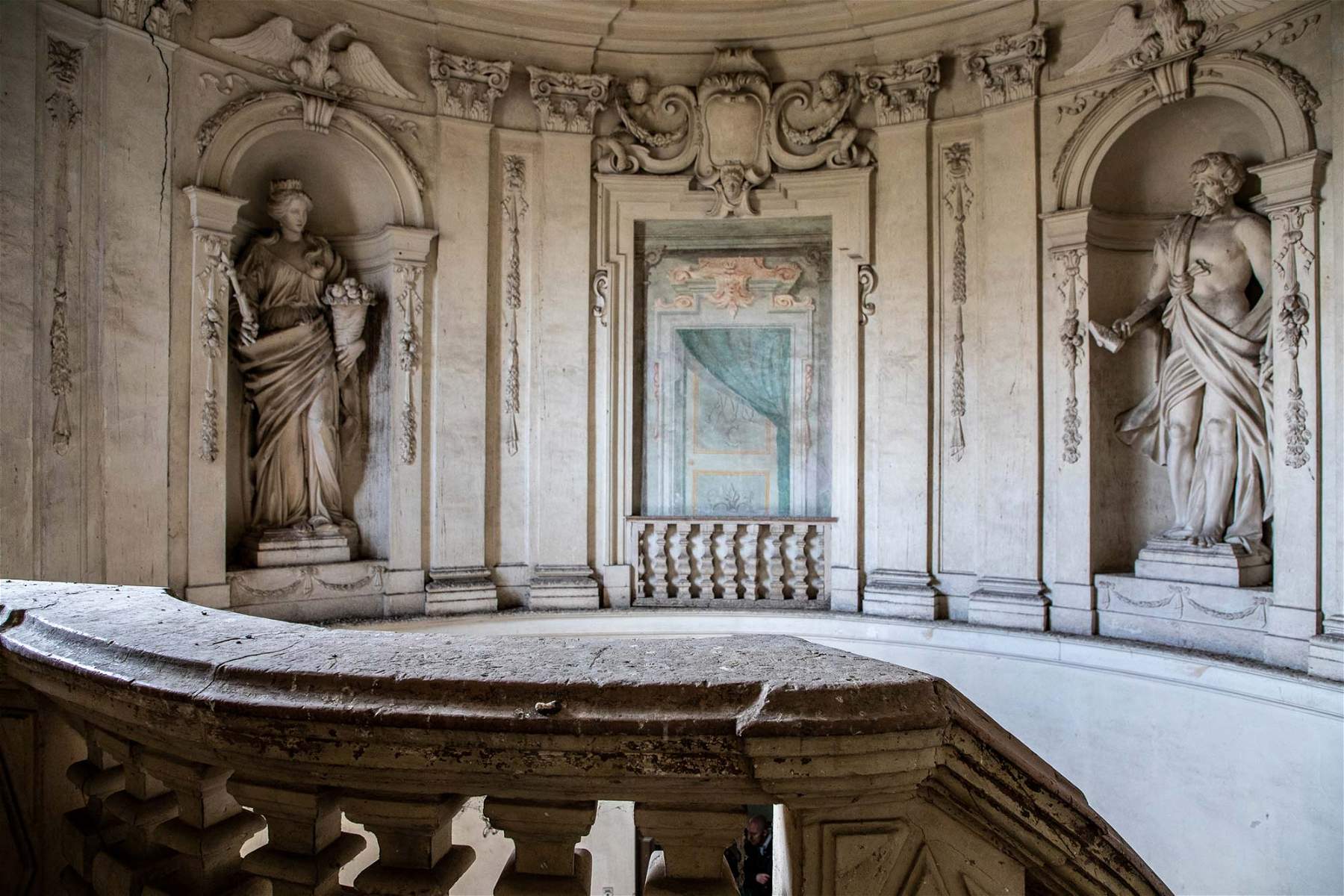An important restoration work begins in Ferrara that will lead to the recovery of another historic building of the Herculean addition, following the renovation work on the Palazzo dei Diamanti. In fact, work has been handed over on Palazzo Prosperi-Sacrati, which had been closed for 27 years. The building, begun in 1492-1493, was built for Francesco da Castello, personal physician (archiatra) of Ercole I d’Este, being completed in 1513-1514. The intervention is worth more than 7million euros (1,460,647.78 of regional contributions for post-earthquake works, 5million from the Development and Cohesion Fund for redevelopment and refunctionalization, and 600 thousand from the Municipality of Ferrara) for a duration of about two and a half years. Also present at today’s launch were the designers and representatives of the companies involved, a team from Emilia and Lombardy led by coop Buozzi of Parma, Leonardo of Bologna for the restorations and iMartini of Mantua for the plant engineering.
The project integrates the restorations of the interior works with new plant engineering and services necessary for the new museum use and the construction of two vertical connections at opposite ends of the building. Central to this will also be the external redevelopment, which will include the extension of the green area behind, with the displacement of the existing partially collapsed wall, to the courtyard area closest to the neighboring school. The space thus acquired will thus include the access opening onto Corso Biagio Rossetti. The opening will extend to the adjoining area to the north to achieve “permeability” toward the larger lateral portion of the park, which runs along Corso Ercole d’Este, formerly part of the complex and now in use by the school. When the construction site is completed, the ground floor will house the bookshop-ticket office and services in use by the building.
The middle floor will house some offices and rooms with exhibition functions, while the museum heart will be on the upper floor, which will be accessed by a renovated monumental staircase and a new entrance to the left of the external entrance. This will be the exhibition venue par excellence, with the ’rehabilitation’ of the large noble hall in the center to allow an organic path for those visiting the exhibitions. “An ambitious project,” Professor Paolo Zermani, director of works, called it, “not only because it will give back to the city an extraordinary building, but also because in offering a new home to Ferrara’s complex museum system we will carry out operations that will put the palace back into ’circulation’ in its urban texture. And all this, in a city that is very important at the European level for the history of urban planning, is particularly significant.”
“This is an important day, not to say historic since it has been awaited for almost 30 years,” say Mayor Alan Fabbri and Aldermen Marco Gulinelli and Andrea Maggi. “A historic building that has been left to decay for too long, in the heart of the city that made Ferrara the ’first modern capital of Europe,’ is also about to be reborn. This will be the opportunity to have a new museum venue and to attract new visitors and projects, in the context of a new integrated programming in which also participate: the rediscovered Palazzo Diamanti and, not far away, the long-awaited Spazio dedicated to Michelangelo Antonioni. A new venue of great prestige will thus be realized at Palazzo Prosperi-Sacrati to further enhance the city’s cultural offerings. Thanks to the technicians and all the companies involved.”
 |
| Ferrara, restoration work begins on Palazzo Prosperi-Sacrati, closed for 27 years |
Warning: the translation into English of the original Italian article was created using automatic tools. We undertake to review all articles, but we do not guarantee the total absence of inaccuracies in the translation due to the program. You can find the original by clicking on the ITA button. If you find any mistake,please contact us.